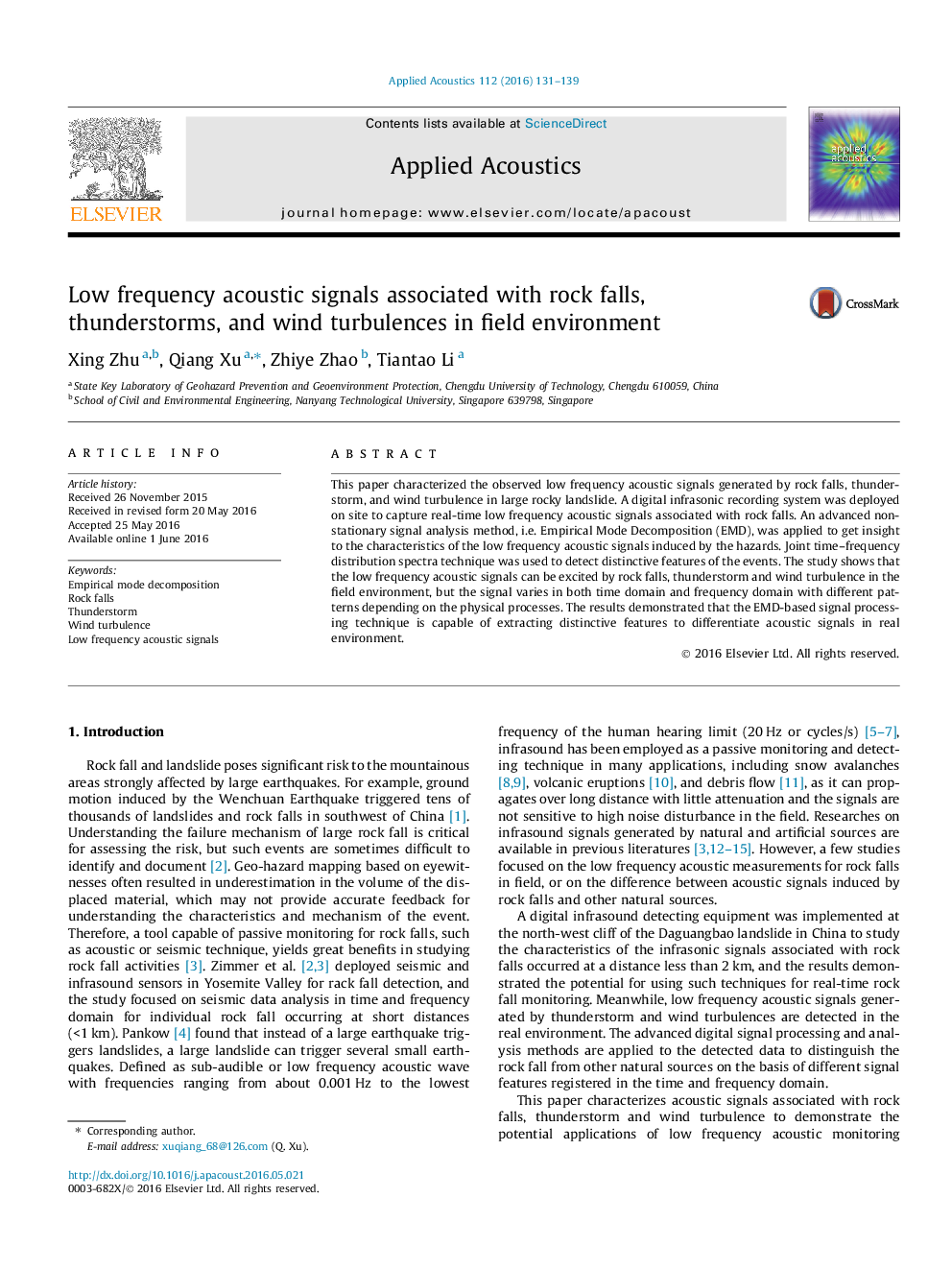| Article ID | Journal | Published Year | Pages | File Type |
|---|---|---|---|---|
| 760740 | Applied Acoustics | 2016 | 9 Pages |
This paper characterized the observed low frequency acoustic signals generated by rock falls, thunderstorm, and wind turbulence in large rocky landslide. A digital infrasonic recording system was deployed on site to capture real-time low frequency acoustic signals associated with rock falls. An advanced non-stationary signal analysis method, i.e. Empirical Mode Decomposition (EMD), was applied to get insight to the characteristics of the low frequency acoustic signals induced by the hazards. Joint time–frequency distribution spectra technique was used to detect distinctive features of the events. The study shows that the low frequency acoustic signals can be excited by rock falls, thunderstorm and wind turbulence in the field environment, but the signal varies in both time domain and frequency domain with different patterns depending on the physical processes. The results demonstrated that the EMD-based signal processing technique is capable of extracting distinctive features to differentiate acoustic signals in real environment.
